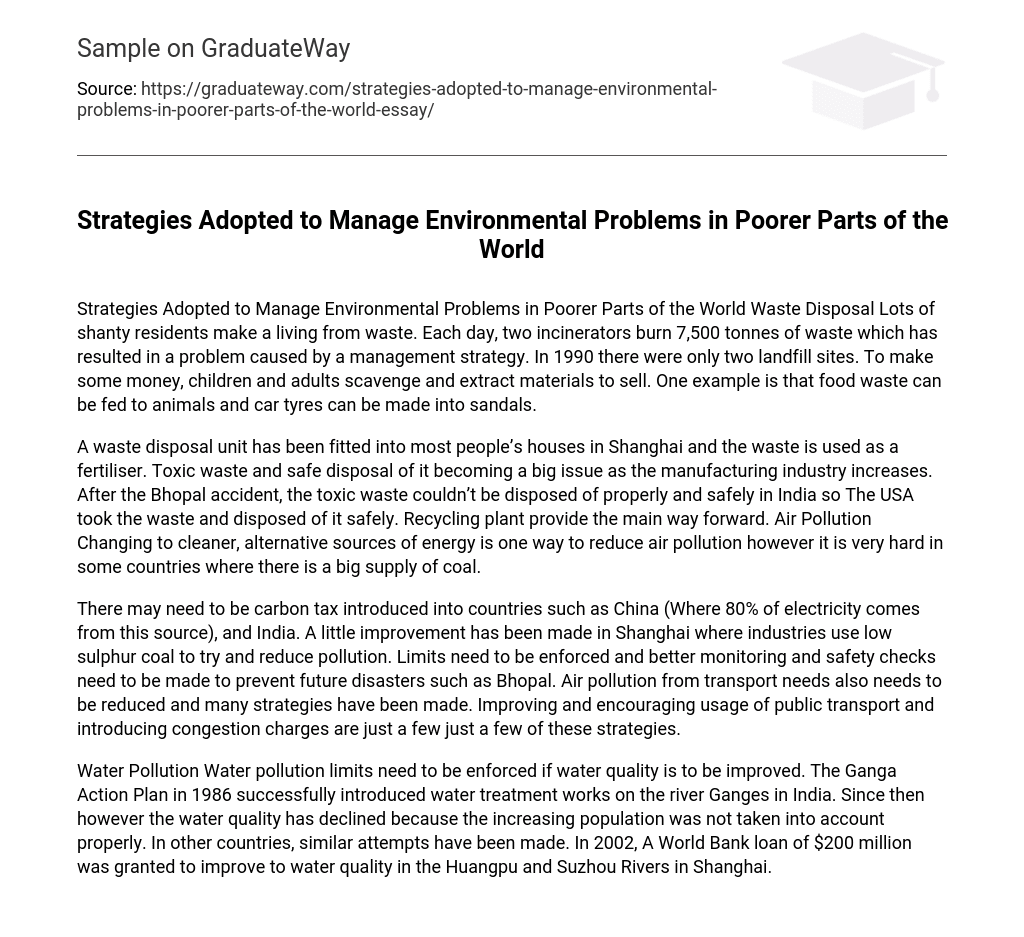Strategies Adopted to Manage Environmental Problems in Poorer Parts of the World Waste Disposal Lots of shanty residents make a living from waste. Each day, two incinerators burn 7,500 tonnes of waste which has resulted in a problem caused by a management strategy. In 1990 there were only two landfill sites. To make some money, children and adults scavenge and extract materials to sell. One example is that food waste can be fed to animals and car tyres can be made into sandals.
A waste disposal unit has been fitted into most people’s houses in Shanghai and the waste is used as a fertiliser. Toxic waste and safe disposal of it becoming a big issue as the manufacturing industry increases. After the Bhopal accident, the toxic waste couldn’t be disposed of properly and safely in India so The USA took the waste and disposed of it safely. Recycling plant provide the main way forward. Air Pollution Changing to cleaner, alternative sources of energy is one way to reduce air pollution however it is very hard in some countries where there is a big supply of coal.
There may need to be carbon tax introduced into countries such as China (Where 80% of electricity comes from this source), and India. A little improvement has been made in Shanghai where industries use low sulphur coal to try and reduce pollution. Limits need to be enforced and better monitoring and safety checks need to be made to prevent future disasters such as Bhopal. Air pollution from transport needs also needs to be reduced and many strategies have been made. Improving and encouraging usage of public transport and introducing congestion charges are just a few just a few of these strategies.
Water Pollution Water pollution limits need to be enforced if water quality is to be improved. The Ganga Action Plan in 1986 successfully introduced water treatment works on the river Ganges in India. Since then however the water quality has declined because the increasing population was not taken into account properly. In other countries, similar attempts have been made. In 2002, A World Bank loan of $200 million was granted to improve to water quality in the Huangpu and Suzhou Rivers in Shanghai.





